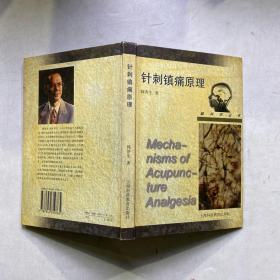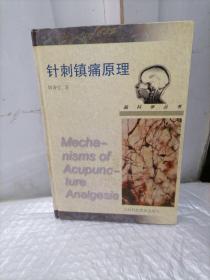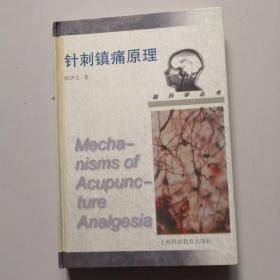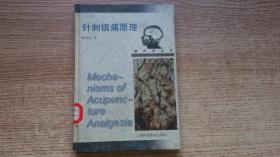
【正版库存】 针刺镇痛的神经化学基础(3卷997-2006)(精) 9787811163490 北京大学医学
¥ 101.97 8.0折 ¥ 128 九五品
库存2件
陕西西安
认证卖家担保交易快速发货售后保障
作者韩济生
出版社北京大学医学
ISBN9787811163490
出版时间2008-01
装帧精装
开本其他
定价128元
货号1283682
上书时间2024-09-21
- 在售商品 暂无
- 平均发货时间 9小时
- 好评率 暂无
- 最新上架
商品详情
- 品相描述:九五品
- 商品描述
-
目录
1 OVERVIEW
1.1 Acupuncture activates endogenous systems of analgesia
1.2 Acupuncture anesthesia (AA) versus acupuncture-assisted anesthesia (AAA)
1.3 Electroacupuncture: mechanisms and clinical application
1.4 Acupuncture research & neuroscience development
1.5 Traditional and evidence-based acupuncture: history, mechanisms, and present status
1.6 Opioid and antiopioid peptides: a model of Yin-Yang balance in
acupuncture mechanisms of pain modulation
1.7 Acupuncture: neuropeptide release produced by electrical stimulation of different frequencies
1.8 Heritability of nociception.HI.Genetic relationships among commonly
used assays of nociception and hypersensitivity
1.9 The effect of genotype on sensitivity to electroacupuncture analgesia
2 PEPTIDE AND NON-PEPTIDE OPIOID AGONIST
2.1 Discrimination between peptide and non-peptide opioid agonists
on the transcription of opioid receptors in two cell lines
2.2 Inhibition of the transcription of u opioid receptor by long-term
exposure of SHSY5Y cell line to peptide and non-peptide opioid agonists
2.3 The metabolic evidence of synergistic effect between ohmefentanyl
and [D-Pen2, D-PenS]enkephalin on differentiated SH-SY5Y cells in humans
2.4 The metabolic evidence of synergistic interaction between
DAMGO and DPDPE on undifferentiated SH-SY5Y cells
3 ACUTE PAIN
3.1 Endomorphin-1 mediates 2 Hz but not 100 Hz electroacupuncture analgesia in the rat
3.2 Endomorphin and u-opioid receptors in mouse brain mediate
the analgesic effect induced by 2 Hz but not 100 Hz electroacupuncture stimulation
3.3 Acupuncture and endorphins
3.4 Effects of synchronous or asynchronous electroacupuncture stimulation with low versus high frequency on
spinal opioid release and tail flick nociception
3.5 Decreased dynorphin A ( 1-17 ) in the spinal
cord of spastic rats after the compressive injury
3.6 Involvement of ionotropic glutamate receptors in low
frequency electroacupuncture analgesia in rats
3.7 Characteristics of electroacupuncture-induced analgesia in mice:
variation with strain, requency, intensity and opioid involvement
3.8 Relations between brain network activation and analgesic effect induced by low vs.high frequency electrical
acupoint stimulation in different subjects: a functional magnetic resonance imaging study
3.9 Modulation of cold pain in human brain by electric acupoint stimulation: evidence from MRI
3.10 Evidence from brain imaging with fMRI supporting functional specificity of acupoints in humans
3.11 Modulation of pain signal processing by electric acupoint
stimulation: an electroencephalogram study
3.12 Parallel pain processing in freely moving rats revealed by distributed neuron recording
3.13 Nociceptive responses of anterior cingulate cortical ensembles in behaving rats
3.14 Differential modulation of nociceptive neural responses in medial and lateral pain pathways by peripheral
electrical stimulation: a multichannel recording study the analysis of cerebral evoked potentials
3.15 Sliding-window technique for
3.16 Coding of peripheral electrical stimulation frequency in thalamocortical pathways
3.17 A controlled study to evaluate the analgesic effect of transcutaneous electric nerve stimulation on post-operative
pain in patients of cardiac operation: patient-controlled analgesia as the evaluation criterion
4 CHRONIC PAIN
5 ANTI-OPIOID PEPTIDES AND OPIOID TOLERANCE
6 DRUG DEPENDENCE
7 PARKINSION'S DISEASE
8 OBESITY
APPENDIX 1 Source of Paper
APPENDIX 2 Acupuncture research is part of my life
相关推荐
— 没有更多了 —






















以下为对购买帮助不大的评价